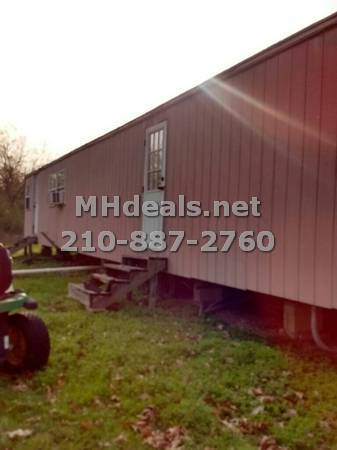As the pursuit of homeownership continues to be a dream for many, the ever-evolving real estate landscape has sparked curiosity about unconventional and budget-friendly housing options. In the quest for affordability, the concept of singlewide homes has gained traction, leaving many to wonder: Can I get a singlewide home for $7k?
In a housing market that often seems like a labyrinth of escalating costs and financial barriers, the idea of a $7,000 dwelling challenges conventional norms. This article aims to unravel the possibilities and challenges associated with the pursuit of an affordable dwelling. We will also look extensively at the traits of singlewide homes and exploring whether this modest budget can indeed open the door to homeownership.
Can I Get a Singlewide Home for $7K?
Buying a singlewide home for less than $10k is feasible albeit rarely. Mitigating circumstances can cause home owners to consider selling their houses for such amount. However, in a normal housing market, it will be next to impossible to find a singlewide manufactured home for $7k.
While the possibility of acquiring a singlewide home for $7,000 is not entirely impossible, it is crucial to approach this prospect with a realistic understanding of the housing market dynamics. Several factors significantly impact the feasibility of finding a singlewide home at such a modest price.
7 Factors Influencing the Cost of Singlewide Homes
1. Location Matters
The cost of singlewide homes varies based on where you’re looking. Urban areas or regions with high demand often come with higher prices. On the other hand, more rural or less sought-after locations might offer more budget-friendly options. Consider the location carefully, as it can significantly impact the overall cost of your singlewide home.
2. Age and Condition Considerations
The age and condition of the singlewide home play a crucial role in its cost. Older homes may have a lower initial price, but they might require more maintenance or upgrades. Factor in potential renovation costs when evaluating the overall investment. Understanding the home’s condition is essential to make informed decisions about your budget.
3. Land Inclusion or Lease
The $7,000 budget may or may not include the land where the singlewide home sits. Some deals cover the land, while others involve separate leasing arrangements. Be clear about this aspect to avoid unexpected expenses. Understanding the terms related to land inclusion or lease is crucial for an accurate assessment of the total cost.
4. Market Fluctuations
Real estate markets are dynamic, and prices can fluctuate based on economic conditions, demand, and other factors. Stay informed about current market conditions to gauge whether it’s a buyer’s or seller’s market. Being aware of market fluctuations helps you make strategic decisions and may impact the affordability of singlewide homes.
5. Utilities and Infrastructure
Consider the state of utilities and infrastructure associated with the singlewide home. Costs can vary based on the availability and condition of utilities such as water, electricity, and sewage systems. Assessing these factors beforehand prevents unforeseen expenses and contributes to a more accurate budgeting process.
6. Local Zoning Regulations
Zoning regulations and land-use policies can affect the cost and availability of singlewide homes. Some areas may have restrictions on where these homes can be placed, influencing their pricing. Understanding local zoning regulations is essential to navigate any potential challenges and ensure compliance with the law.
7. Community Amenities and Services
The presence of community amenities and services can impact the cost of singlewide homes. Communities with additional features such as recreational areas, security services, or maintenance facilities may have higher overall costs. Evaluate whether these amenities align with your preferences and budget, as they contribute to the total expense of your singlewide home purchase.
How Much Is the Cheapest Mobile Home?
Priced between $60,000 and $90,000, a single-wide trailer stands as the most economical option among manufactured homes. The efficiency of delivery and setup is notable, facilitated by the entire home being transported on a single truck. Spanning 80 feet in length, singlewides typically feature 1 or 2 bedrooms, making them well-suited for smaller families and more compact lots. The cost-effectiveness and streamlined logistics make singlewides an attractive choice within the realm of manufactured homes.
Finally
While success stories exist, it’s essential to approach the search for a $7,000 singlewide home with a level-headed perspective. Thorough research, understanding local market conditions, and considering potential additional costs beyond the purchase price are crucial steps in determining the viability of this budget-friendly homeownership pursuit.
